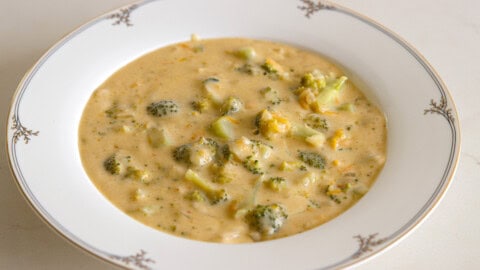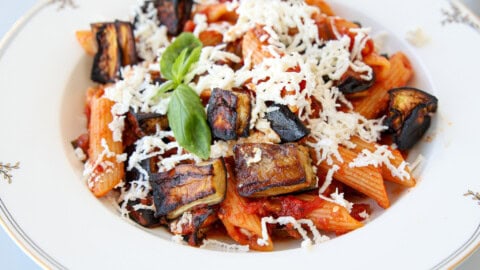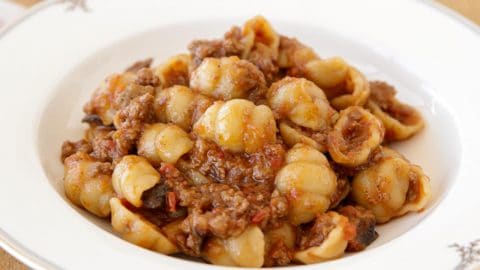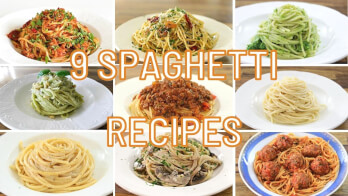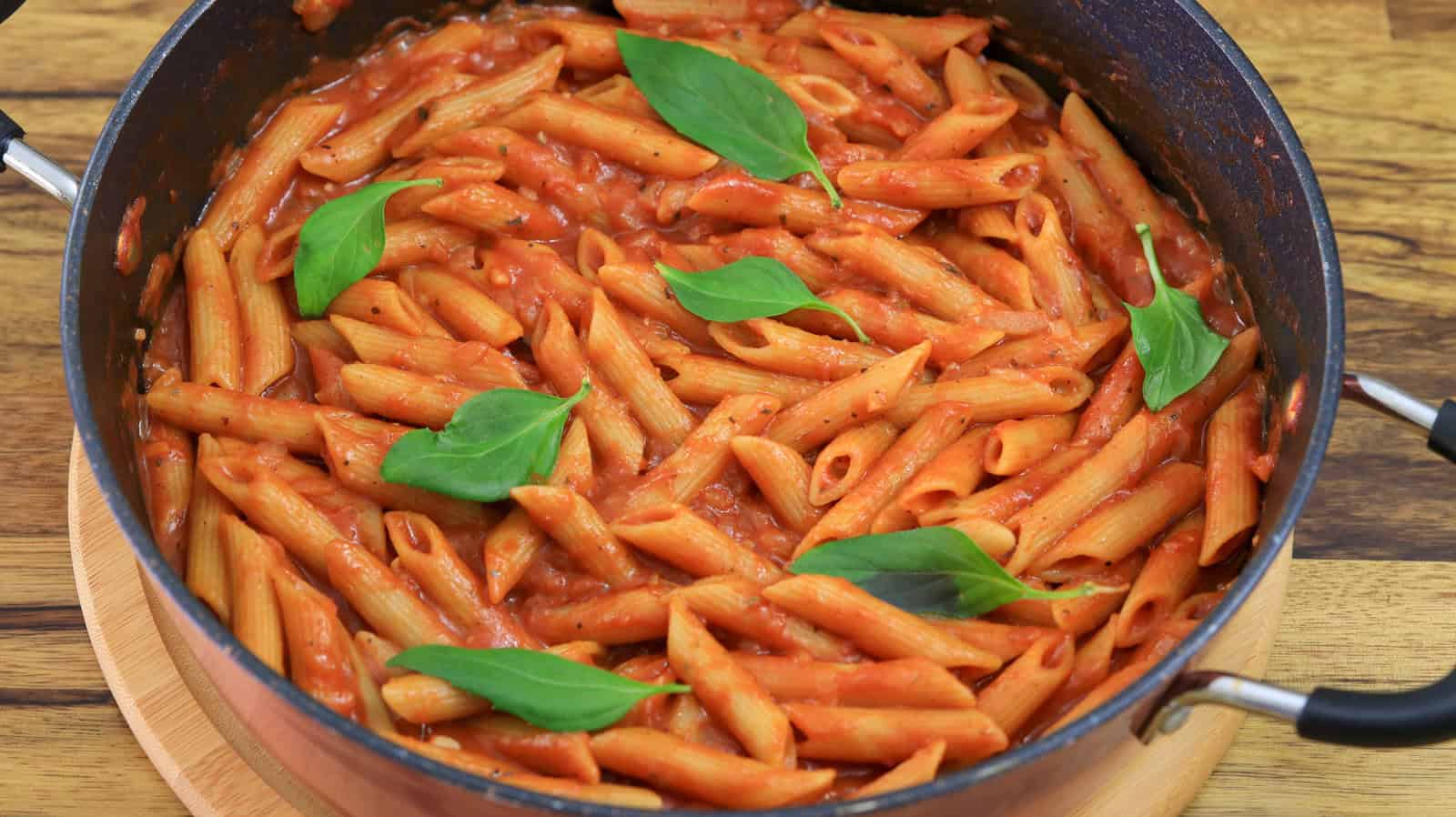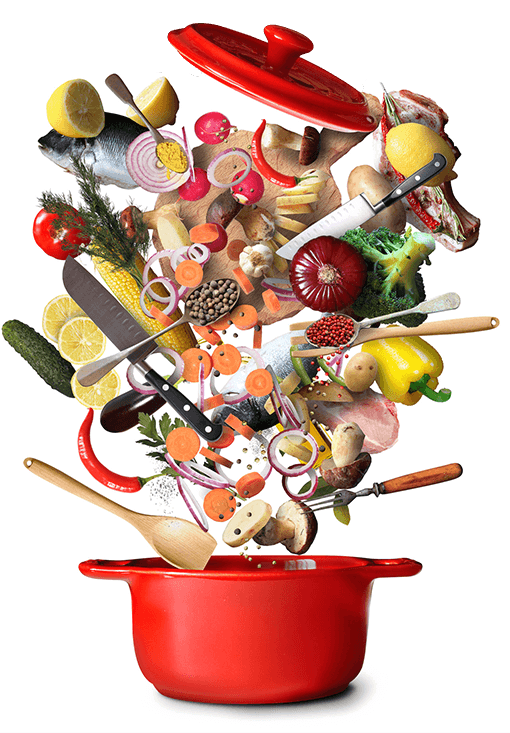Easy Minestrone Soup Recipe
Minestrone soup is an easy, hearty Italian dish with a delicious tomato base, pasta, and fresh veggies. Perfect for a wholesome, comforting meal anytime!
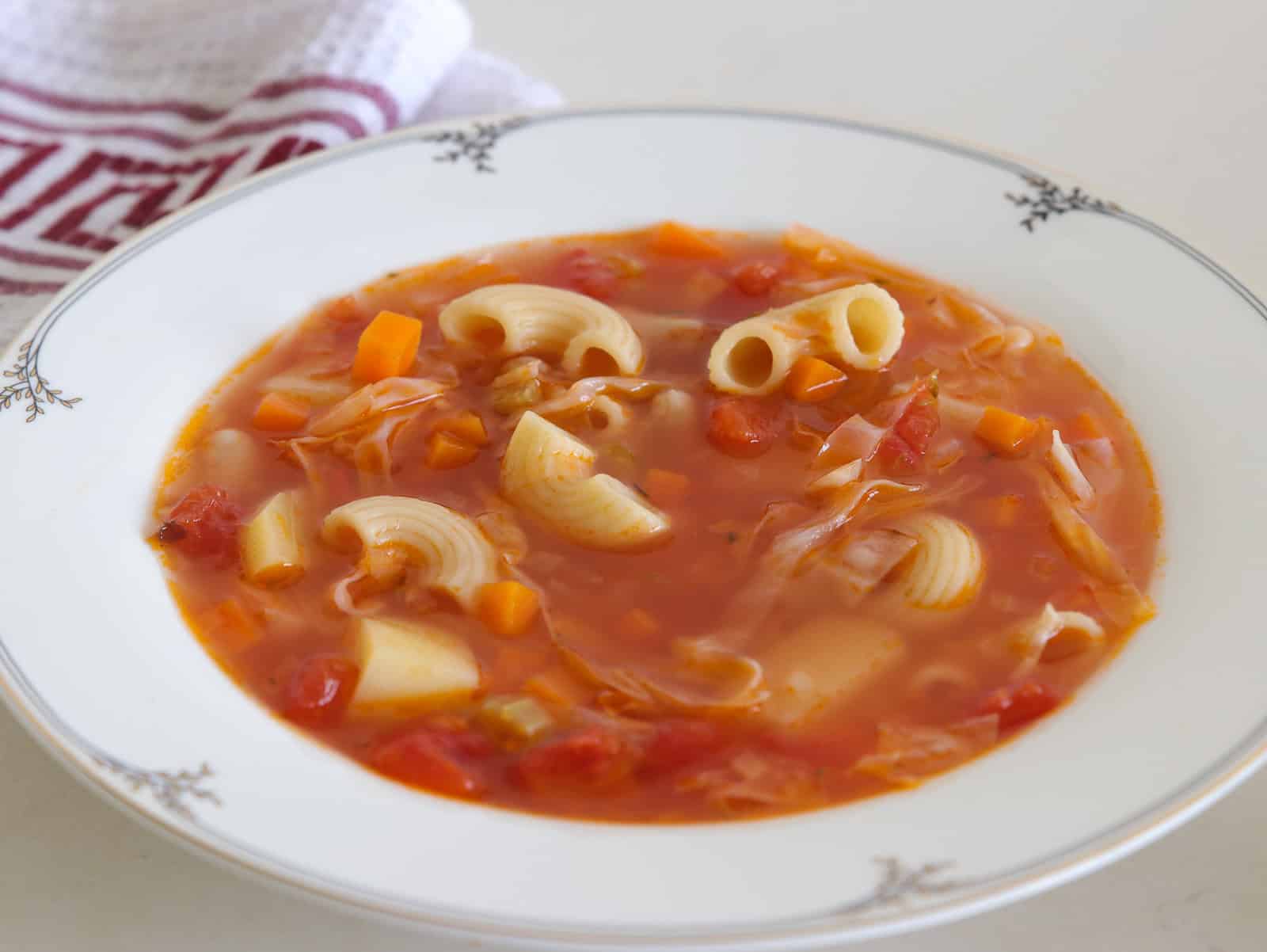
Why You’ll Love Minestrone Soup
I absolutely love soup, especially in the fall and winter when the weather starts to cool down. There’s nothing more comforting than a warm bowl of soup to cozy up with. One of my all-time favorites is my famous lentil soup, which is a staple in my kitchen. Two other soups I love are broccoli cheddar soup and mushroom barley soup—they’re both hearty and satisfying. But one soup I keep coming back to, especially when I want something light yet filling, is easy Minestrone. It’s a delicious, tomato-based Italian classic that reminds me of those Olive Garden soups that always hit the spot. This version is packed with fresh veggies, pasta, and beans, making it a perfect, balanced meal. Plus, it’s naturally vegan, so it’s great for everyone. Whether you’re looking for a nutritious weeknight dinner or something to meal prep, this Minestrone soup is versatile, simple to make, and bursting with flavor!
What is Minestrone Soup?
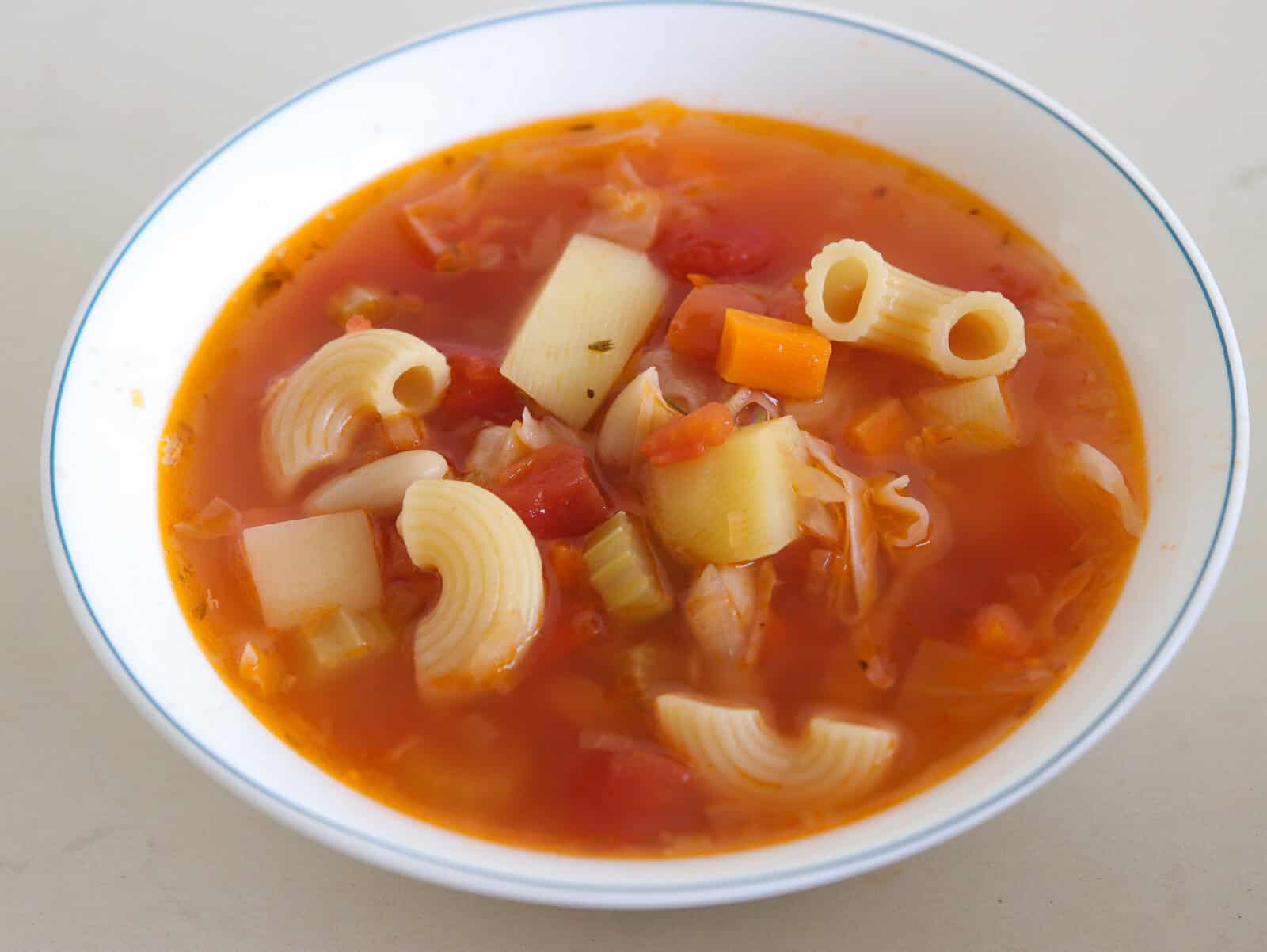
Minestrone soup is a classic Italian soup made with a variety of seasonal vegetables, beans, pasta, or rice, all simmered in a tomato-based broth. The recipe is highly versatile, with ingredients varying based on region, season, and personal preference. Common vegetables include onions, carrots, celery, potatoes, and cabbage, while beans and pasta add protein and heartiness. Traditionally, minestrone is a hearty, wholesome dish that can be made vegan or vegetarian. It’s often served with grated Parmesan and a side of crusty bread, making it a comforting, nutritious meal perfect for any time of year.
Ingredients for Minestrone Soup
- Olive oil: Provides a flavorful base for sautéing the vegetables and adds richness to the soup.
- Onion: Adds sweetness and depth of flavor, forming the aromatic base of the soup.
- Garlic: Enhances the soup with a bold, savory aroma and flavor.
- Carrots: Adds natural sweetness and texture, complementing the heartiness of the soup.
- Celery: Provides a subtle, earthy flavor that balances the sweetness of the carrots and onion.
- Potatoes: Adds bulk and creaminess, making the soup more filling and hearty.
- Chopped tomatoes: Forms the tomato-based broth, adding acidity and richness to the soup.
- Vegetable stock/water: The liquid component that cooks the vegetables and pasta while creating a flavorful broth.
- Beans: Adds protein and fiber, making the soup more nutritious and satisfying.
- Pasta: Brings texture and makes the soup more hearty, turning it into a complete meal.
- Cabbage: Adds a slight crunch and earthy flavor, contributing to the soup’s vegetable-packed profile.
- Salt & Black pepper: Enhance and balance the flavors of all the ingredients.
- Thyme: Adds a warm, earthy aroma and depth to the soup’s flavor.
- Bread: Perfect for dipping and soaking up the flavorful broth.
- Parmesan: (Optional) Adds a salty, savory touch to finish the dish with extra richness.
How to Make The Best Minestrone
- Sauté the Vegetables: Start by heating olive oil in a large pot and sautéing chopped onions, garlic, carrots, and celery. This step builds the flavorful base of your minestrone soup.
- Create the Tomato-Based Broth: Add diced potatoes and canned tomatoes to the pot, then pour in vegetable stock or water. Bring the mixture to a boil, infusing your soup with rich flavors.
- Cook the Pasta and Beans: Once the broth is ready and the vegetables are tender, toss in your favorite beans and pasta. Let them simmer until the pasta is cooked perfectly.
- Add the Finishing Touches: Finally, stir in chopped cabbage and adjust seasoning with salt, pepper, and thyme. Serve the soup with rustic bread and optional Parmesan for added depth and texture.
Olive Garden Minestrone Soup
Olive Garden’s minestrone soup is a popular favorite, known for its hearty mix of vegetables, beans, and pasta in a savory tomato-based broth. It’s a comforting, vegan-friendly option that many love for its simplicity and consistent flavor. However, I prefer my version because it’s fresher, more customizable, and packed with vibrant seasonal vegetables. While Olive Garden’s recipe is delicious, making it at home allows me to control the ingredients, add more flavor with herbs like thyme, and use my favorite beans and pasta. Plus, homemade minestrone has a richer, more robust taste that simply can’t be beat!
Is Minestrone Soup Tomato Based Originally?
The minestrone soup was not originally tomato-based. The dish dates back to ancient Rome, long before tomatoes were introduced to Europe from the Americas in the 16th century. Early versions of minestrone were more of a simple, vegetable-based soup, made with whatever vegetables were available locally and seasonally. It wasn’t until after the introduction of tomatoes to Italy that the tomato-based version of minestrone became popular. Today, many variations exist, with tomato-based minestrone being one of the most common, but the soup can still be made without tomatoes, showcasing its versatility and adaptability.
Which Vegetables Are Best For Minestrone?
The best vegetables for minestrone soup are those that offer a balance of flavors, textures, and colors. Typically, these include a mix of the following:
- Onions: Adds sweetness and forms the aromatic base.
- Carrots: Provides natural sweetness and a firm texture.
- Celery: Offers a mild, earthy flavor and a slight crunch.
- Potatoes: Adds bulk and makes the soup heartier.
- Zucchini: Softens nicely, adding texture without overpowering the flavors.
- Cabbage: Adds a subtle crunch and earthy taste.
- Green beans: Contributes a slightly bitter, fresh flavor.
- Spinach or Kale: Offers a tender, leafy component for added nutrients.
- Tomatoes: Provides acidity and forms the base of the broth in tomato-based versions.
- Peas: Adds a touch of sweetness and brightens the soup.
These vegetables can be swapped based on the season and availability, allowing for endless variations of minestrone. Seasonal vegetables like butternut squash or corn can also be added for unique twists.
Substitutes and Variations
Legend has it that every nonna in Italy has her own unique version of minestrone soup, tailored to the season, region, and what’s available in the kitchen. One of the best things about minestrone is how versatile it is. Here are some great substitutes and variations you can try:
- Vegetables: Swap out any vegetable based on the season. Use butternut squash or sweet potatoes in the fall, or fresh zucchini and green beans in the summer.
- Pasta or Rice: Traditional minestrone often includes pasta, but you can substitute it with rice, quinoa, or even barley for a different texture.
- Beans: If you don’t have cannellini or kidney beans on hand, try using chickpeas or black beans for a different flavor and texture.
- Tomato Base: Not a fan of tomatoes? Leave them out and use vegetable or chicken broth as the base for a lighter version.
- Protein Boost: While minestrone is often vegan, you can add cooked sausage, pancetta, or shredded chicken to make it heartier.
- Herbs and Spices: Thyme and basil are common, but you can also add rosemary, oregano, or even a pinch of red pepper flakes for some heat.
Vegan Minestrone Soup
Minestrone is naturally vegan when made with vegetable broth and plant-based ingredients. The base is filled with fresh vegetables like carrots, celery, and potatoes, and protein-packed beans like kidney or cannellini beans. To ensure your soup is fully vegan, skip the Parmesan cheese or use a dairy-free alternative. You can also enhance the flavor with nutritional yeast for a cheesy, umami touch. Minestrone is a great, hearty vegan meal that’s both nutritious and satisfying.
Gluten-Free Minestrone Soup
For a gluten-free version, simply swap out the traditional pasta for gluten-free pasta, quinoa, or rice. Be sure to check your vegetable broth for any hidden gluten ingredients, as some store-bought broths may contain gluten. This variation is perfect for those with gluten sensitivities, offering all the comforting flavors of classic minestrone with a gluten-free twist. The result is a nourishing, filling soup that everyone can enjoy.
Serve With
- Crusty Bread: A rustic, warm loaf of crusty bread is perfect for soaking up the flavorful broth.
- Garlic Bread: For extra flavor, serve your minestrone with garlic bread, garlic naan or toasted slices brushed with olive oil and rubbed with garlic.
- Parmesan Cheese: Grated Parmesan sprinkled on top adds a savory, cheesy touch. You can also use a vegan cheese alternative for a plant-based version.
- Fresh Herbs: Garnish with fresh basil, parsley, or thyme for added color and flavor.
- Side Salad: A light side salad with mixed greens such as kale salad, or more vibrant option like beetroot and chickpea salad, or actually any other salad recipe that you like.
- Olive Tapenade: A side of olive tapenade or marinated olives adds a burst of Mediterranean flavor to the meal.
How to Store Minestrone
Minestrone soup stores exceptionally well, making it perfect for meal prep or leftovers. Here’s how to store it properly:
- Refrigeration: Allow the soup to cool completely before transferring it to an airtight container. It can be stored in the refrigerator for up to 4-5 days. When reheating, you may need to add a little extra broth or water, as the pasta and vegetables tend to absorb liquid while stored.
- Freezing: Minestrone freezes well for up to 3 months. For best results, freeze the soup without the pasta to prevent it from becoming mushy when thawed. Simply cook fresh pasta when you’re ready to serve. To freeze, let the soup cool, then portion it into freezer-safe containers or zip-top bags, leaving some room for expansion. Label with the date and freeze.
- Thawing and Reheating: When ready to enjoy, thaw frozen minestrone overnight in the refrigerator or use the defrost setting on your microwave. Reheat on the stovetop over medium heat, stirring occasionally, until heated through.
More Comforting Soups
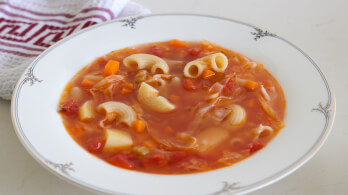
Easy Minestrone Soup Recipe
Ingredients
- 2-3 tablespoons Olive oil
- 1 Onion chopped
- 3 Garlic cloves minced
- 3 Carrots diced
- 2 Celery stalks chopped
- 2 Potatoes diced
- 1 can (400 g) Chopped tomatoes
- 8 cups (2 Liter) Vegetable stock/water
- 1 can Beans of your choice
- ⅔ cup Pasta
- ¼ head Cabbage
- Salt to taste
- Black pepper to taste
- 1 teaspoon Thyme
- Bread for serving
- Parmesan for serving
Instructions
- In a large pot, heat olive oil. Add chopped onion and sauté for 4-5 minutes.
- Add minced garlic, diced carrots and chopped celery. Cook for 6-7 minutes.
- Add diced potatoes, crushed tomatoes, vegetable stock/water, season with salt, pepper, thyme and bring to a boil. Reduce to low heat and simmer until potatoes are tender, about 15 minutes.
- Add beans and pasta, cook for 10 minutes.
- Add chopped cabbage and cook for 2-3 minutes.
- Check the seasoning and add spices of needed.
- Pour into a bowl and grate some parmesan (optional). Serve with rustic bread.
Video
Notes
- FAQs: Make sure you read the FAQs for this recipe which are located below the recipe box for additional tips and troubleshooting!
- Season in Stages: Season the soup as you go—add salt and pepper while sautéing the vegetables and adjust seasoning after simmering to enhance the flavors.
- Customize with Fresh, Seasonal Veggies: Minestrone is highly adaptable, so use whatever vegetables are fresh and in season. This keeps the soup vibrant and flavorful every time!
Nutrition
Frequently Asked Questions
Yes, minestrone soup can be made ahead and stored in the refrigerator for up to 4-5 days. It also freezes well for up to 3 months. For best results, freeze without the pasta and add freshly cooked pasta when reheating.
Small pasta shapes like ditalini, elbow macaroni, or small shells work best in minestrone. These shapes blend well with the vegetables and beans, making every spoonful hearty and balanced.
Absolutely! Simply swap out regular pasta for a gluten-free alternative like gluten-free pasta, quinoa, or rice. Be sure to check your vegetable stock for any hidden gluten as well.
This version of minestrone soup is naturally vegan when made with vegetable stock. You can omit the Parmesan or use a vegan cheese alternative to keep the soup completely plant-based.
Yes, if you’d like to add more protein, you can add cooked sausage, pancetta, or shredded chicken. Sauté the meat first, then follow the recipe steps.
Cannellini beans and kidney beans are the most common in minestrone. However, chickpeas, navy beans, or black beans can also be used depending on your preference.

